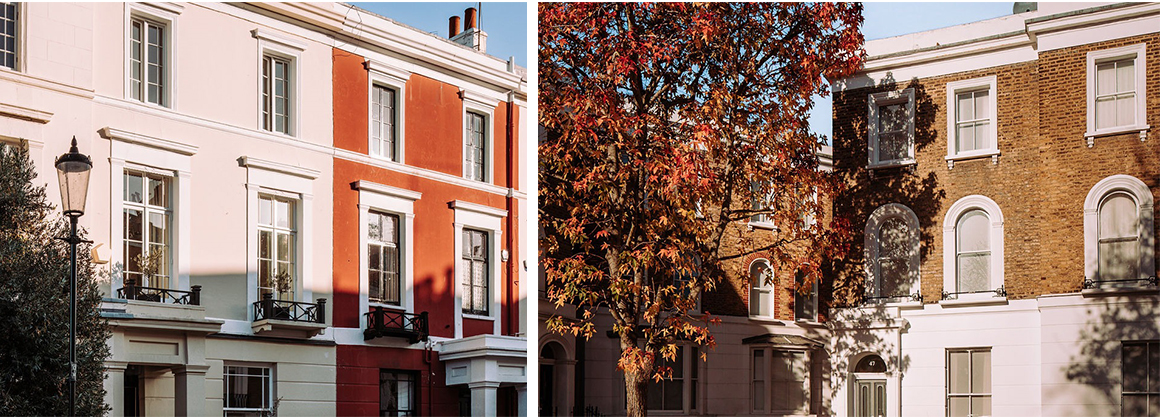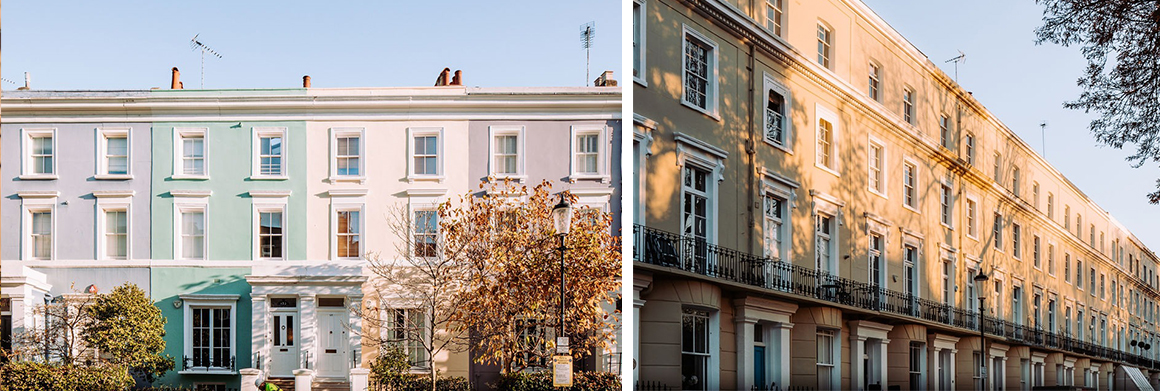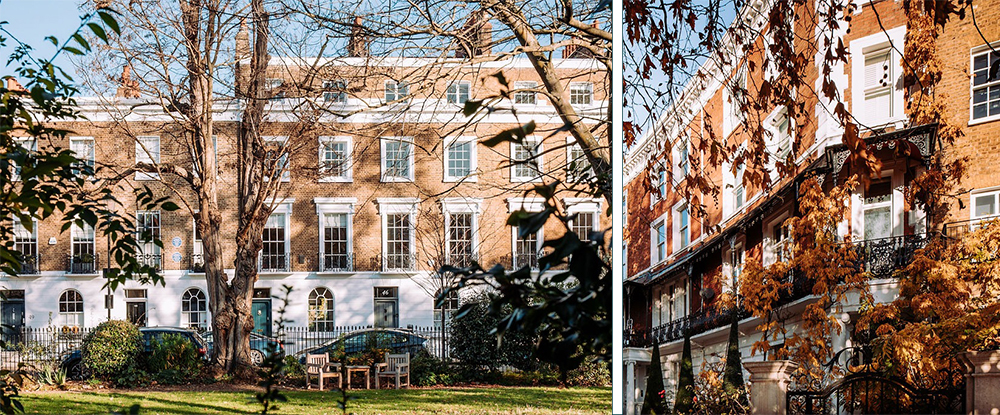
If a week is a long time in politics, then a year must feel like a lifetime to many economists. In this edition of The Buyside, we will try to make sense of what the current political and economic landscape means for London’s prime residential markets in the months and years ahead.
Rates
In November 2021, Capital Economics was calmly predicting that Bank of England interest rates (the ‘Bank Rate’) would not rise above 0.5% before at least 2024 and that a 2% interest rate would lead to a correction in the property market. Less than a year later, the Bank Rate is 2.25%, past Capital Economics’ correction threshold, and will almost certainly rise again incrementally in November, December and February.
Even at the current level of 2.25%, homeowners who are now coming off fixed rate mortgages – which include many who bought in 2020 in the immediate aftermath of lockdown 1 and in the midst of the stamp duty holiday – are facing a sharp rise in borrowing of close to 400 basis points. To put this in context, HSBC’s fixed rate in May 2021 was 1.14% whilst their variable rate today is 5.04%. On a £1m mortgage that would mean interest payments have gone from £950 a month to £4,200 per month; or £11,400 per annum to £50,400 per annum.
We have come to enjoy exceptionally low ‘crisis’ rates of around 0.5% in the UK and globally and interest rate rises were an inevitability. However, the harsh political manoeuvres delivered under Liz Truss’ administration accelerated this process by alarming the UK financial markets and brought the reality of the increases home to everyone. The British media have done their best to exacerbate concerns with widespread coverage of the UK property market’s downfall and limited reference to the global context.
The Bank of England Governor, Andrew Bailey, is unequivocal in his mandate: “let me be quite clear, there are no ifs or buts in our commitment to the 2% inflation target. That’s our job, and that’s what we will do”. To achieve this, investors and economists expect that the Bank Rate will need to rise to between 4 and 6%. Thankfully, in recent days, economists are now predicting the lower end of that range: in part, because of the stabilising effect of the election of Rishi Sunak as Prime Minister and, in part, because at 6% there is a very real risk that businesses and households could not service their debts. What is uncertain is whether the independent Bank of England will compromise on their inflation target to avoid a meltdown in the mortgage markets.

The Mainstream Market
Before we focus on the specifics of the prime central London market, we felt it was important to differentiate between the mainstream market nationwide, which is more closely correlated to UK GDP; more sensitive to any rise in unemployment; more heavily constrained by affordability (with individual bank stress testing currently ranging from 5-10%); and more negatively impacted by the rapid rises in the cost of living. The mainstream markets are also much more susceptible to buy to let investors exiting the market and the systemic risk that brings.
Whilst we solely act for buyers in London’s prime and super prime markets, understanding the mainstream market is important to understanding the headlines in the months ahead. Almost all commentators are now forecasting a correction to the UK housing market. The industry database, LonRes, reported a spike in fall throughs last week (up 88%), withdrawals (up 48%) and price cuts (up 76%), although exchanges and new instructions were also both up 20+%. Other indices would also suggest the slow down and correction has begun – RICS indices have seen falling demand outside of London since August, whilst Halifax and Nationwide property indexes suggest market growth has stalled – although it is too early and the data too thin to really understand the extent of any correction.
We might look to what is happening in New Zealand, Canada and Australia for an indication of what’s to come: where interest rates have risen in those countries, so the property markets have corrected. In New Zealand’s case, where rates doubled, they have already seen a fall of circa 12% with Goldman Sachs projecting a fall of 23% by the end of 2023. Prior to this, the market in New Zealand had seen average growth of 40% since the pandemic began, with the current correction reversing growth and re-establishing the market to its summer 2021 levels.
Back at home, since the mini budget earlier this month, various forecasters have issued revised figures: Capital Economics predicts a fall of 12% assuming a base rate of circa 5%; Bloomberg economics predicts a fall of 10%; Knight Frank predicts a fall of 10% (with 5% in each of the next two years); Pantheon Macro Economics predict a correction of 8% assuming a base rate at 4%; and Lloyds Bank project that if the Bank Rate rises to 4.75% we would see a correction of 14%. Comparable to New Zealand, the UK property market has seen growth of 23% since the pandemic began with expected falls partially unwinding the exuberant growth of this period.
Forecasters don’t expect greater falls in the mainstream market or entering in to ‘crash’ territory partly because record low level of inventory will support prices through the correction. In addition, unlike during the 2008 crash, nearly half of homeowners in England have no mortgage at all, those that are indebted have a higher proportion of fixed borrowing costs (and have been exposed to more aggressive affordability stress testing measures since 2014) and have accumulated savings during the pandemic period whilst spending was depressed.
For now, the immediate impact will likely be felt in transactional volumes which, if we follow the path of New Zealand, could fall by as
much as a third.

Prime Central London – the recent past
Turning now to London, prior to the UK’s bungled attempt at Trussonomics, there was no sign of easing in the prime central London residential markets, particularly for best-in-class properties where competition was fierce and values and transactional volumes were exceeding the last peak in 2014.
The market here is substantially driven by international buyers who are less reliant (focused) on the strength of the UK economy, are able to take advantage of recent currency gains, and mortgages are required by less than a third of buyers, often then only for the purposes of efficient tax and financial planning.
Very low levels of good stock, especially turnkey properties, contrasted with strong demand – particular from US buyers at the top end of the market – with the post-Covid “race for space” continuing to create a feeding frenzy for the very best of London’s housing stock. Average annual growth was reported at somewhere between 3-5%, representing the highest average growth in values since 2014. The reality is of course more nuanced and property specific with houses continuing to outperform apartments and certain neighborhoods, such as Holland Park, seeing dramatic growth of 20/30% for best-in-class assets whilst Knightsbridge for example and more urban enclaves have seen falls during the same period. What has become increasingly clear during this post-pandemic period is that the market has become much more focused on quality and longevity and there is now a very significant gap in appetite, and accordingly in values, for the best and worst in class.
In terms of forecasting, Savills, Knight Frank, Strutt & Parker and Cluttons were collectively projecting cumulative growth of 21-24% over 5 years. Broadly this was 7/8% in 2022, with a slowdown in 2024 for political uncertainty around the general election before a more ‘normalised’ 4% growth in later years. In recent months, both Savills and Knight Frank have revised their forecast to push the 7/8% growth into 2023, owing to the war in Ukraine and a slow return of international buyers.

Prime Central London in a changing world
Knight Frank have been the first to react to the impact of political events in recent weeks and changing sentiment around interest rates. They have now revised both their sales and rental forecasts for the prime central London markets. On the sales side, they expect a correction of 3% next year (a drop of 10% from their previous forecast), a flat market through the 2024 election cycle, before a return to growth in 2024 and 2025. Overall, they now project just 7.5% growth over the next 5 years, contrasting to their 20%+ growth predictions earlier this year for the same period.
Interestingly, London’s average growth over the last few years has significantly underperformed other global prime cities, with London coming in the bottom half of both Knight Frank and Savills global prime indices, suggesting there may be less ‘froth’ to wipe off during this period. The longer-term correction since 2014, which Savills estimate at nearly 20%, may also serve as a cushion against a future correction and almost certainly underpins the marginal correction Knight Frank predict notwithstanding the considerable headwinds.
The arguments for London’s fundamental allure are well rehearsed and remain persuasive and there is no need to rehash here. The pandemic momentarily wrought havoc on cities and some have been slower to recover than others. With London early to open (and keep open) its doors we seem to have fared better than others. Indeed, if Bloomberg’s Pret Index was definitive, London is riding high at around 88% whilst New York languishes in the mid 40%s! Other cities have faced their own unique challenges, most notably Hong Kong.
As far as the prime rental market is concerned, Knight Frank researchers have adjusted their forecast upwards to predict a further 6% growth next year as shortage of supply and a challenging sales market drives rental growth with 33% growth over the next 5 years.
Although Trussonomics fleetingly promised a boom for London, the chaos that unfolded undoubtedly caused more harm than good to its reputation worldwide. Levelling up was an important part of the Conservatives 2019 manifesto, but ensuring London remains a leading global city is not only important for the UK but also for underpinning London’s prime and super prime markets. We hope that Rishi Sunak can combine competence with compassion as he steers the country through the coming global economic storm. Whether he can demonstrably move the dial with the country’s electorate ahead of the tabled General Election in 2024 remains to be seen. If not, we will see a change in government in two years’ time and can expect property and wealth to be at the forefront of the political agenda, including potential changes to the UK’s ‘Non-Dom’ regime.
Looking to external factors, if the last few years have taught us anything, it is to expect the unexpected. There may be further geo-political shocks in the Ukraine, Taiwan, turbulence around US Elections, European fragmentation, Cyber risks, Gulf tensions and North Korea. What is evident is that such shocks can have a dramatic impact on the global economy which then directly impacts the residential markets; be it through inflation, mortgage markets, currency or increasing safe-haven demand, even changing how we view our homes and our cities. Such external forces often play a more acute but defining short term role on the prime and super prime residential markets in London.

On the ground, the impact of the recent political chaos is still far from clear. This week, we are still enduring competitive processes for best-in-class properties, with rumours of some buyers transacting without surveys to win out – a tactic for the very brave or the foolhardy. For other buyers, the recent instability has emboldened them in negotiations, and we continue to hope for a more meaningful transition from a sellers’ market. There is little evidence of this thus far and, interestingly, one important super prime development has responded in the last week by putting up their prices by 10% for the last remaining units! So far, there is very little if any distress amongst sellers and most argue that London has always performed well in a crisis. Negotiations over value and price will become more protracted and more precarious so we predict experience, emotional intelligence and strategic nous will be increasingly valuable commodities.
In terms of buyer demand, statistics for the super prime markets are very unreliable, often premised off web traffic or enquiries, both of which include a lot of window shopping. We expect active buyers to be focused and needs driven with family or commercial reasons for being and buying in London. They will be focused on quality and long-term value preservation whilst discretionary and opportunistic buyers are likely to play a longer waiting game.
Anecdotally, we can see clearly that the selling agents remain extremely busy during this period, many having cancelled half term holiday plans, and we ourselves onboarded more clients in October than in any other month this year, all buying in US$ or with a US$ pegged currency. This is unsurprising when you look at the potential currency discounts available, making sense of some suggestions that the UK is ‘on sale’! Compared to the last peak of the market in 2014, combining the currency falls ($1.7 to $1.1) and Savills market correction (17%) creates a discount for dollar buyers of around 45%. To put figures on that, a house purchased in London for £10m in 2014 would have likely cost the buyer US$17m, whereas today it might only set them back US$9m. Whilst that sort of discount won’t underpin the entire market, it may mitigate some of the risk and transactional costs for motivated buyers, particularly at the already stock-constrained top end of the market.
Whilst London real estate remains a global asset class and is undoubtedly less impacted than the domestic markets by the hike in mortgage rates or the cost-of-living crisis, it doesn’t seem possible that the market can remain immune in its entirety to the interest rate shock and global conditions. We expect the market to further polarise along lines of quality with competition continuing and values sustaining for ‘best-in-class’ properties, particularly those that have been subjected to a recent and comprehensive refurbishment. In contrast, values for poor, compromised and/or unmodernised property will likely suffer further declines, as demand falls. Sellers of these imperfect properties will need to become more aware of the flight to quality in the market and far more realistic about the true extent of construction costs and the complexities involved if buyers are to embark on projects to modernise their homes. Where there is actual distress, we may see some very significant price adjustments, but this is likely to be occasional and buyers should be very cautious that they are not buying in to someone else’s problem.

If a week is a long time in politics, then a year must feel like a lifetime to many economists. In this edition of The Buyside, we will try to make sense of what the current political and economic landscape means for London’s prime residential markets in the months and years ahead.
Rate
In November 2021, Capital Economics was calmly predicting that Bank of England interest rates (the ‘Bank Rate’) would not rise above 0.5% before at least 2024 and that a 2% interest rate would lead to a correction in the property market. Less than a year later, the Bank Rate is 2.25%, past Capital Economics’ correction threshold, and will almost certainly rise again incrementally in November, December and February.
Even at the current level of 2.25%, homeowners who are now coming off fixed rate mortgages – which include many who bought in 2020 in the immediate aftermath of lockdown 1 and in the midst of the stamp duty holiday – are facing a sharp rise in borrowing of close to 400 basis points. To put this in context, HSBC’s fixed rate in May 2021 was 1.14% whilst their variable rate today is 5.04%. On a £1m mortgage that would mean interest payments have gone from £950 a month to £4,200 per month; or £11,400 per annum to £50,400 per annum.
We have come to enjoy exceptionally low ‘crisis’ rates of around 0.5% in the UK and globally and interest rate rises were an inevitability. However, the harsh political manoeuvres delivered under Liz Truss’ administration accelerated this process by alarming the UK financial markets and brought the reality of the increases home to everyone. The British media have done their best to exacerbate concerns with widespread coverage of the UK property market’s downfall and limited reference to the global context.
The Bank of England Governor, Andrew Bailey, is unequivocal in his mandate: “let me be quite clear, there are no ifs or buts in our commitment to the 2% inflation target. That’s our job, and that’s what we will do”. To achieve this, investors and economists expect that the Bank Rate will need to rise to between 4 and 6%. Thankfully, in recent days, economists are now predicting the lower end of that range: in part, because of the stabilising effect of the election of Rishi Sunak as Prime Minister and, in part, because at 6% there is a very real risk that businesses and households could not service their debts. What is uncertain is whether the independent Bank of England will compromise on their inflation target to avoid a meltdown in the mortgage markets.

The Mainstream Market
Before we focus on the specifics of the prime central London market, we felt it was important to differentiate between the mainstream market nationwide, which is more closely correlated to UK GDP; more sensitive to any rise in unemployment; more heavily constrained by affordability (with individual bank stress testing currently ranging from 5-10%); and more negatively impacted by the rapid rises in the cost of living. The mainstream markets are also much more susceptible to buy to let investors exiting the market and the systemic risk that brings.
Whilst we solely act for buyers in London’s prime and super prime markets, understanding the mainstream market is important to understanding the headlines in the months ahead. Almost all commentators are now forecasting a correction to the UK housing market. The industry database, LonRes, reported a spike in fall throughs last week (up 88%), withdrawals (up 48%) and price cuts (up 76%), although exchanges and new instructions were also both up 20+%. Other indices would also suggest the slow down and correction has begun – RICS indices have seen falling demand outside of London since August, whilst Halifax and Nationwide property indexes suggest market growth has stalled – although it is too early and the data too thin to really understand the extent of any correction.
We might look to what is happening in New Zealand, Canada and Australia for an indication of what’s to come: where interest rates have risen in those countries, so the property markets have corrected. In New Zealand’s case, where rates doubled, they have already seen a fall of circa 12% with Goldman Sachs projecting a fall of 23% by the end of 2023. Prior to this, the market in New Zealand had seen average growth of 40% since the pandemic began, with the current correction reversing growth and re-establishing the market to its summer 2021 levels.
Back at home, since the mini budget earlier this month, various forecasters have issued revised figures: Capital Economics predicts a fall of 12% assuming a base rate of circa 5%; Bloomberg economics predicts a fall of 10%; Knight Frank predicts a fall of 10% (with 5% in each of the next two years); Pantheon Macro Economics predict a correction of 8% assuming a base rate at 4%; and Lloyds Bank project that if the Bank Rate rises to 4.75% we would see a correction of 14%. Comparable to New Zealand, the UK property market has seen growth of 23% since the pandemic began with expected falls partially unwinding the exuberant growth of this period.
Forecasters don’t expect greater falls in the mainstream market or entering in to ‘crash’ territory partly because record low level of inventory will support prices through the correction. In addition, unlike during the 2008 crash, nearly half of homeowners in England have no mortgage at all, those that are indebted have a higher proportion of fixed borrowing costs (and have been exposed to more aggressive affordability stress testing measures since 2014) and have accumulated savings during the pandemic period whilst spending was depressed.
For now, the immediate impact will likely be felt in transactional volumes which, if we follow the path of New Zealand, could fall by as much as a third.

Prime Central London – the recent past
Turning now to London, prior to the UK’s bungled attempt at Trussonomics, there was no sign of easing in the prime central London residential markets, particularly for best-in-class properties where competition was fierce and values and transactional volumes were exceeding the last peak in 2014.
The market here is substantially driven by international buyers who are less reliant (focused) on the strength of the UK economy, are able to take advantage of recent currency gains, and mortgages are required by less than a third of buyers, often then only for the purposes of efficient tax and financial planning.
Very low levels of good stock, especially turnkey properties, contrasted with strong demand – particular from US buyers at the top end of the market – with the post-Covid “race for space” continuing to create a feeding frenzy for the very best of London’s housing stock. Average annual growth was reported at somewhere between 3-5%, representing the highest average growth in values since 2014. The reality is of course more nuanced and property specific with houses continuing to outperform apartments and certain neighborhoods, such as Holland Park, seeing dramatic growth of 20/30% for best-in-class assets whilst Knightsbridge for example and more urban enclaves have seen falls during the same period. What has become increasingly clear during this post-pandemic period is that the market has become much more focused on quality and longevity and there is now a very significant gap in appetite, and accordingly in values, for the best and worst in class.
In terms of forecasting, Savills, Knight Frank, Strutt & Parker and Cluttons were collectively projecting cumulative growth of 21-24% over 5 years. Broadly this was 7/8% in 2022, with a slowdown in 2024 for political uncertainty around the general election before a more ‘normalised’ 4% growth in later years. In recent months, both Savills and Knight Frank have revised their forecast to push the 7/8% growth into 2023, owing to the war in Ukraine and a slow return of international buyers.

Prime Central London in a changing world
Knight Frank have been the first to react to the impact of political events in recent weeks and changing sentiment around interest rates. They have now revised both their sales and rental forecasts for the prime central London markets. On the sales side, they expect a correction of 3% next year (a drop of 10% from their previous forecast), a flat market through the 2024 election cycle, before a return to growth in 2024 and 2025. Overall, they now project just 7.5% growth over the next 5 years, contrasting to their 20%+ growth predictions earlier this year for the same period.
Interestingly, London’s average growth over the last few years has significantly underperformed other global prime cities, with London coming in the bottom half of both Knight Frank and Savills global prime indices, suggesting there may be less ‘froth’ to wipe off during this period. The longer-term correction since 2014, which Savills estimate at nearly 20%, may also serve as a cushion against a future correction and almost certainly underpins the marginal correction Knight Frank predict notwithstanding the considerable headwinds.
The arguments for London’s fundamental allure are well rehearsed and remain persuasive and there is no need to rehash here. The pandemic momentarily wrought havoc on cities and some have been slower to recover than others. With London early to open (and keep open) its doors we seem to have fared better than others. Indeed, if Bloomberg’s Pret Index was definitive, London is riding high at around 88% whilst New York languishes in the mid 40%s! Other cities have faced their own unique challenges, most notably Hong Kong.
As far as the prime rental market is concerned, Knight Frank researchers have adjusted their forecast upwards to predict a further 6% growth next year as shortage of supply and a challenging sales market drives rental growth with 33% growth over the next 5 years.
Although Trussonomics fleetingly promised a boom for London, the chaos that unfolded undoubtedly caused more harm than good to its reputation worldwide. Levelling up was an important part of the Conservatives 2019 manifesto, but ensuring London remains a leading global city is not only important for the UK but also for underpinning London’s prime and super prime markets. We hope that Rishi Sunak can combine competence with compassion as he steers the country through the coming global economic storm. Whether he can demonstrably move the dial with the country’s electorate ahead of the tabled General Election in 2024 remains to be seen. If not, we will see a change in government in two years’ time and can expect property and wealth to be at the forefront of the political agenda, including potential changes to the UK’s ‘Non-Dom’ regime.
Looking to external factors, if the last few years have taught us anything, it is to expect the unexpected. There may be further geo-political shocks in the Ukraine, Taiwan, turbulence around US Elections, European fragmentation, Cyber risks, Gulf tensions and North Korea. What is evident is that such shocks can have a dramatic impact on the global economy which then directly impacts the residential markets; be it through inflation, mortgage markets, currency or increasing safe-haven demand, even changing how we view our homes and our cities. Such external forces often play a more acute but defining short term role on the prime and super prime residential markets in London.

On the ground, the impact of the recent political chaos is still far from clear. This week, we are still enduring competitive processes for best-in-class properties, with rumours of some buyers transacting without surveys to win out – a tactic for the very brave or the foolhardy. For other buyers, the recent instability has emboldened them in negotiations, and we continue to hope for a more meaningful transition from a sellers’ market. There is little evidence of this thus far and, interestingly, one important super prime development has responded in the last week by putting up their prices by 10% for the last remaining units! So far, there is very little if any distress amongst sellers and most argue that London has always performed well in a crisis. Negotiations over value and price will become more protracted and more precarious so we predict experience, emotional intelligence and strategic nous will be increasingly valuable commodities.
In terms of buyer demand, statistics for the super prime markets are very unreliable, often premised off web traffic or enquiries, both of which include a lot of window shopping. We expect active buyers to be focused and needs driven with family or commercial reasons for being and buying in London. They will be focused on quality and long-term value preservation whilst discretionary and opportunistic buyers are likely to play a longer waiting game.
Anecdotally, we can see clearly that the selling agents remain extremely busy during this period, many having cancelled half term holiday plans, and we ourselves onboarded more clients in October than in any other month this year, all buying in US$ or with a US$ pegged currency. This is unsurprising when you look at the potential currency discounts available, making sense of some suggestions that the UK is ‘on sale’! Compared to the last peak of the market in 2014, combining the currency falls ($1.7 to $1.1) and Savills market correction (17%) creates a discount for dollar buyers of around 45%. To put figures on that, a house purchased in London for £10m in 2014 would have likely cost the buyer US$17m, whereas today it might only set them back US$9m. Whilst that sort of discount won’t underpin the entire market, it may mitigate some of the risk and transactional costs for motivated buyers, particularly at the already stock-constrained top end of the market.
Whilst London real estate remains a global asset class and is undoubtedly less impacted than the domestic markets by the hike in mortgage rates or the cost-of-living crisis, it doesn’t seem possible that the market can remain immune in its entirety to the interest rate shock and global conditions. We expect the market to further polarise along lines of quality with competition continuing and values sustaining for ‘best-in-class’ properties, particularly those that have been subjected to a recent and comprehensive refurbishment. In contrast, values for poor, compromised and/or unmodernised property will likely suffer further declines, as demand falls. Sellers of these imperfect properties will need to become more aware of the flight to quality in the market and far more realistic about the true extent of construction costs and the complexities involved if buyers are to embark on projects to modernise their homes. Where there is actual distress, we may see some very significant price adjustments, but this is likely to be occasional and buyers should be very cautious that they are not buying in to someone else’s problem.

